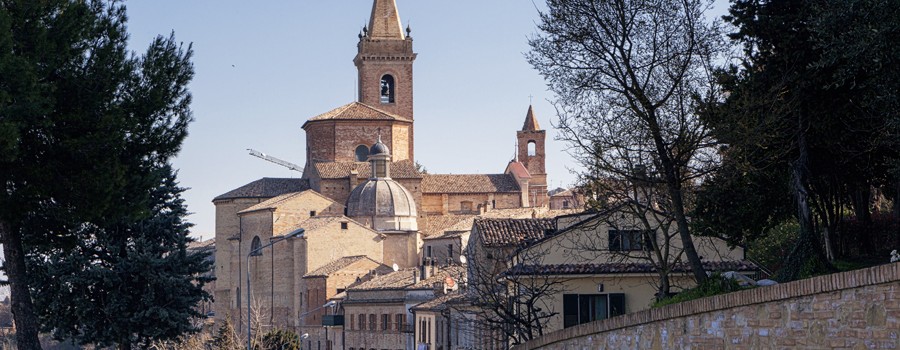The municipality of Ripatransone, on a tall hill overlooking the surrounding landscape, is one of the three Piceno towns to have been awarded the Italian Touring Club’s Orange Flag quality mark.
Surrounded by walls that are surviving testimony of the Medieval and Renaissance past, there is a belvedere that has made Ripatransone famous as “the balcony of Piceno”. Here we find the historic “L. Mercantini” theatre and the narrowest alley in Italy, and the five museums make it a town of great artistic and cultural interest.
Inside Palazzo Bonomi Gera, a fine stately home built in the late seventeenth century, we find the Museo Civico Palazzo Bonomi Gera, one of the oldest museums in the Marche, which has five exhibition sections: a gallery of contemporary art, a picture gallery, “Uno Gera” gypsotheque, the “Luigi Mercantini” Risorgimento museum, and a historical ethnographic collection.
Via Vittorio Emanuele is the location of the “Don Cesare Cellini” archaeological museum displaying material found in Ripatransone territory and documenting human presence here from prehistoric times to the Middle Ages.
Inside the church of Sant’Agostino, a few metres from the town hall, we find the Museo Sistino di arte sacra, an authentic museum-church decorated with frescoes of the fifteenth–sixteenth centuries.
Along Via Garibaldi visitors will find the unusual Museo del Fischietto e del Vasaio with its displays of whistles and pottery, founded by potter Vincenzo Peci to offer material examples of terracotta objects, including whistles that have been produced in Ripatransone since the late nineteenth century. The small museum houses 600 whistles made in different periods.
Lastly, the crypt of the fifteenth-century church of San Filippo is home to a museum of rural and artisan life, displaying for close examination over 1,500 tools used in the countryside and in the workshops of the Ripatransone area until the Fifties.




















